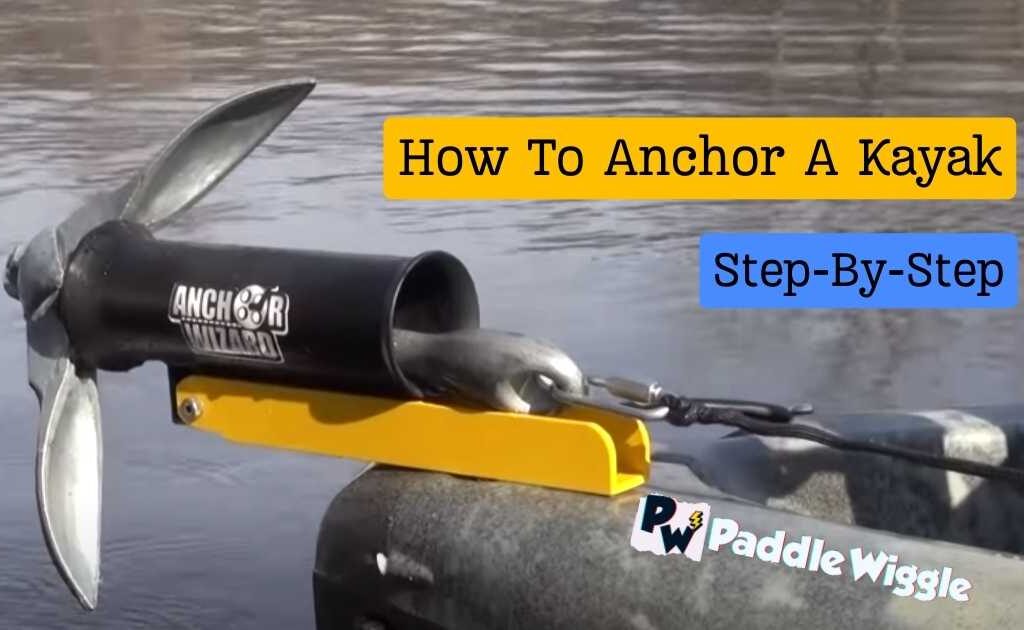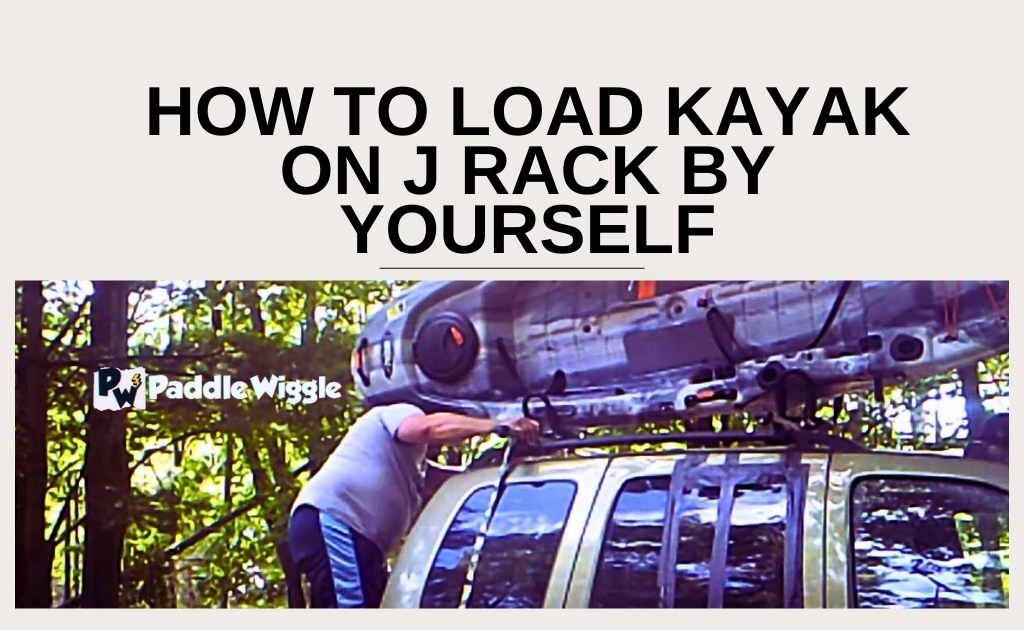As you glide across serene waters, a sense of tranquillity washes over you, and every paddle stroke becomes a step closer to nature’s wonders. But beyond the thrill of exploring new waterways lies a responsibility—a commitment to the art of kayak maintenance. Your kayak is not just a vessel but an investment in your enjoyment and safety on the water.
But how do you maintain a kayak? To maintain your kayak, you need to perform a few things regularly. This involves cleaning after use, inspecting it, checking for any cracks or scratches, fixing them, storing it properly, and a few more.
This comprehensive guide explores the essential practices and steps to ensure your kayak remains in top shape. To make this even easier, we’ll also include a checklist on kayak maintenance 101. Let’s dive in!
Contents
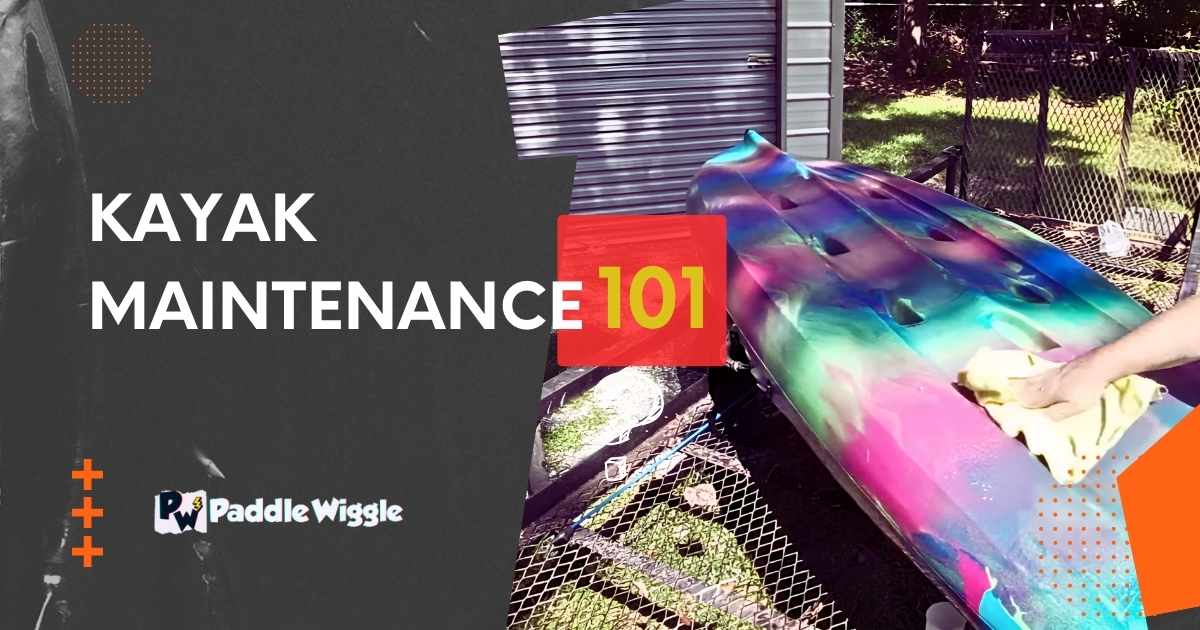
5 Benefits Of Regular Kayak Maintenance That You Can’t Deny!
Taking good care of your kayak doesn’t just make it look nice – it also makes it perform better on the water!
Here are five undeniable benefits of maintaining your kayak regularly:
Improved Performance On The Water
When you take good care of your kayak, it works better on the water. Cleaning the hull and lubricating moving parts make it glide smoothly and respond well to your commands.
Fixing any damage immediately keeps it strong and reliable so that you can paddle confidently in different water conditions.
Enhanced Safety And Reliability
Taking care of your kayak makes it safer and more reliable. Before each paddling trip, check for any hidden problems. Fixing small leaks helps keep it afloat and reduces the chance of tipping over.
And following the manufacturer’s instructions prevents unexpected issues so that you can paddle with peace of mind.
Extended Lifespan And Durability
When you take good care of your kayak, it lasts longer. Cleaning and protecting it from the sun keeps its material strong and flexible. Storing it properly on padded racks prevents damage and warping. Lubricating moving parts reduces wear and tear, making your kayak more durable.
By giving it the care it needs, your kayak will stay reliable for many years of paddling fun.
Saving Money In The Long Term
You can save money in the long run by taking care of your kayak regularly. Fixing small issues immediately prevents them from becoming big, expensive problems later on. A well-maintained kayak is less likely to get seriously damaged, so you won’t need costly repairs.
Plus, if you look after your kayak, it will last longer, meaning you can keep enjoying it without having to buy a new one for a while.
Aesthetic Appeal
A well-maintained kayak looks great! Cleaning and protecting it keeps the colors vibrant and makes every paddling trip even more enjoyable.
Step-By-Step Guide To Maintaining A Kayak For Longevity
Whether you’re a beginner or an experienced paddler, having a kayak means having a ticket to exciting adventures.
Regular maintenance is essential to keep your kayak in great shape and ensure safe and fun trips on the water. In this easy-to-follow guide, we’ll explore the steps to maintain your kayak so it lasts for a long time.
Let’s get started!
Step 1: Inspecting For Damage
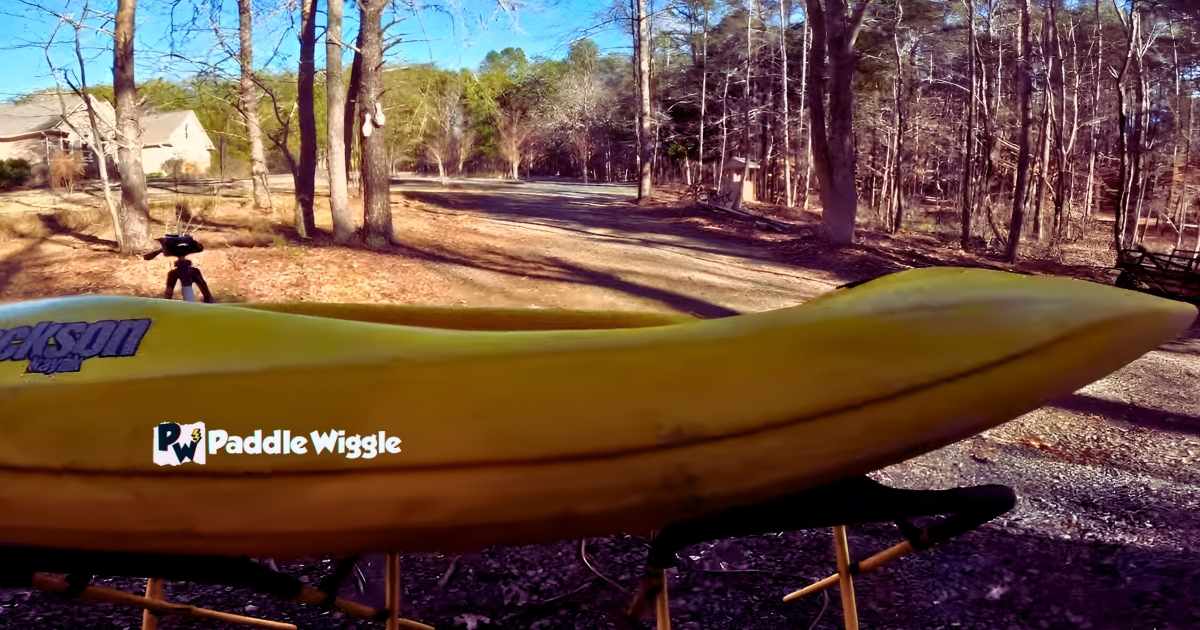

Regularly inspect your kayak for any signs of damage, such as cracks, scratches, or dents. Before each paddling session, examine the hull, deck, and cockpit for a few minutes. Look for any visible changes in the kayak’s surface or structure. If you find any damage, no matter how minor it may seem, address it promptly to prevent further deterioration.
For superficial scratches, you can often buff them out with a polishing compound designed for kayak hulls. Consult a professional kayak repair service for more severe damage, such as cracks or dents. Or you can follow the manufacturer’s instructions for DIY repairs.
Remember, neglecting to fix structural issues can lead to significant problems and compromise the safety and performance of your kayak.
Step 2: Cleaning Your Kayak After Each Use
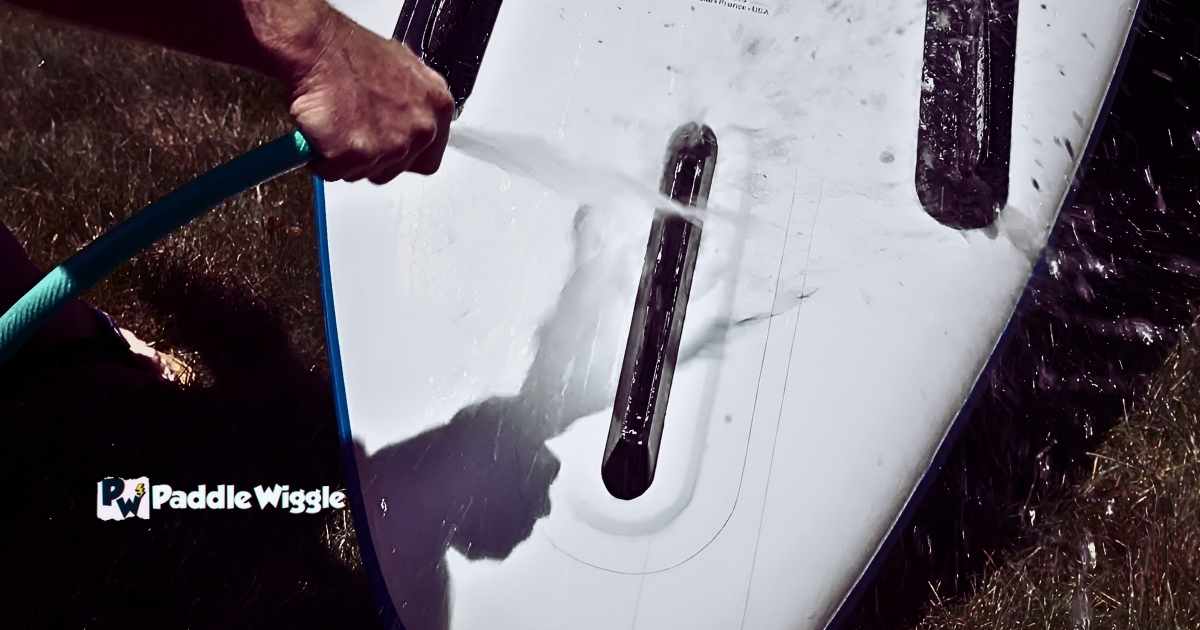

After each kayaking session, cleaning your kayak is essential to remove any dirt, sand, salt, or debris that may have accumulated during your water escapade. Use fresh water and mild detergent to gently scrub the hull, deck, and cockpit. Avoid using harsh chemicals or abrasive materials that could damage the kayak’s surface or protective coatings.
Begin by rinsing your kayak thoroughly with a hose to remove loose dirt and grime. Next, prepare a bucket with a mixture of fresh water and mild, eco-friendly detergent. Use a soft sponge or cloth to scrub the kayak’s surfaces, paying special attention to hard-to-reach areas and crevices where dirt might accumulate.
Rinse the kayak again with clean water to ensure all the soap is removed. Finally, wipe down the kayak with a dry towel to prevent water spots and allow it to air dry in a shaded area.
Step 3: Lubricating Moving Parts
Many kayaks come equipped with moving parts, such as rudders, skegs, foot pedals, and hatches. To ensure these components function smoothly, keeping them properly lubricated is essential. Use a silicone-based lubricant recommended by the kayak’s manufacturer, as it won’t damage the kayak’s material.
Before applying the lubricant, make sure to clean any debris or dirt from the moving parts to prevent contamination. A well-maintained rudder or skeg enhances your kayak’s maneuverability and improves your overall paddling experience.
Step 4: Patching Small Leaks
Over time, kayaks may develop small leaks due to wear, minor impacts, or age. Promptly addressing these leaks is essential to maintain the kayak’s buoyancy and prevent further damage. Keep a kayak repair kit on hand consisting of waterproof adhesives, patches, and sealant.
When patching a leak, clean the affected area thoroughly and allow it to dry completely. Apply the adhesive and patch following the manufacturer’s instructions. Test the repair in a controlled environment before taking your kayak out on the water to ensure it holds.
Step 5: Protecting Your Kayak From UV Rays
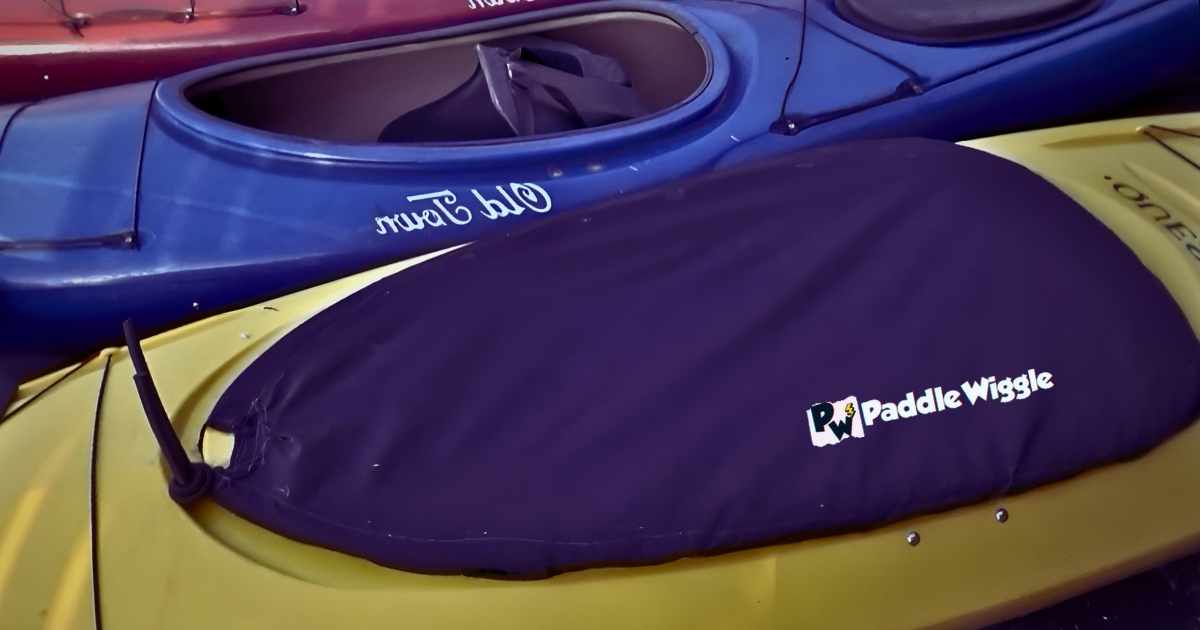

Prolonged exposure to the sun’s ultraviolet (UV) rays can lead to fading and weakening of the kayak’s material over time. UV damage can affect the kayak’s appearance and reduce its overall lifespan. To protect your kayak from the sun, consider storing it in a shaded area when not in use. If indoor storage is not possible, invest in a kayak cover or tarp to shield it from direct sunlight.
Additionally, some manufacturers produce UV protectant sprays specifically formulated for kayak materials. Applying these sprays periodically can add an extra layer of protection against UV rays and extend the life of your kayak’s finish.
Step 6: Proper Storage
Storing your kayak correctly when it’s not in use is vital for maintaining its shape and integrity. Always store your kayak horizontally on padded racks or suspension systems. This prevents the warping of the hull and distributes the weight evenly across the kayak’s surface.
Avoid storing your kayak on hard surfaces or directly on the ground, as this can lead to indentations or deformation over time. Also, refrain from hanging the kayak by its handles, as this can strain the attachment points unnecessarily. If outdoor storage is necessary, consider using a kayak cover or tarp to protect it from the elements.
Step 7: Develop A Regular Maintenance Schedule
Every kayak comes with unique maintenance recommendations provided by the manufacturer. These guidelines are crucial to follow as they are tailored to your kayak’s specific material and design. Refer to the kayak’s user manual or contact the manufacturer directly for detailed information on maintenance intervals and practices.
The recommended maintenance schedule typically includes guidance on tasks like inspecting specific components, replacing worn parts, or performing routine checks. Adhering to these guidelines ensures you are taking the best care of your kayak and can help identify potential issues early.
Step 8: Seasonal Checkup
Before each paddling season, conduct a comprehensive checkup of your kayak. This step ensures that everything is in proper working order and that your kayak is ready for the adventures ahead. Inspect all fittings, deck lines, bungee cords, and attachments. Tighten any loose screws and assess the overall condition of your kayak. Address any concerns or issues found during the checkup before taking your kayak out on the water.
Kayak Maintenance 101: A Checklist To Follow
To streamline your regular kayak maintenance, creating a thorough checklist that covers all the essential tasks is helpful. This will help you stay organized and ensure that every crucial step is noticed.
That’s why we’ve included this kayak maintenance 101 checklist:
| Maintenance Item | Check |
|---|---|
| Cleaning | ☐ |
| Use mild detergent and a soft sponge for cleaning | ☐ |
| Wipe down with a dry towel and air dry in a shaded area | ☐ |
| Rinse thoroughly to remove soap residue | ☐ |
| Store the kayak in a shaded area or use kayak cover | ☐ |
| Inspection | ☐ |
| Check for cracks, scratches, or dents | ☐ |
| Examine fittings, deck lines, and attachments | ☐ |
| Address any issues promptly if found | ☐ |
| UV Protection | ☐ |
| Adhere to a maintenance schedule and guidelines | ☐ |
| Consider using UV protectant sprays | ☐ |
| Lubrication | ☐ |
| Lubricate moving parts with silicone-based lubricant | ☐ |
| Storage | ☐ |
| Store kayak horizontally on padded racks | ☐ |
| Avoid storing kayak on hard surfaces or ground | ☐ |
| Refrain from hanging kayak by its handles | ☐ |
| Leak Repair | ☐ |
| Keep kayak repair kit with waterproof adhesive | ☐ |
| Patch small leaks promptly | ☐ |
| Follow Manufacturer Recommendations | ☐ |
| Conduct thorough checkups before each paddling season | ☐ |
| Perform routine checks and inspections | ☐ |
| Seasonal Checkup | ☐ |
| Handle the kayak gently to avoid strain or damage | ☐ |
| Inspect all fittings, deck lines, and attachments | ☐ |
| Tighten any loose screws and address concerns | ☐ |
| Transport and Handling | ☐ |
| Use proper kayak transportation equipment | ☐ |
| Rinse the kayak with freshwater to remove salt | ☐ |
| Freshwater Rinse After Saltwater Use | ☐ |
| Ensure the kayak is completely dry before storing | ☐ |
| Dry and Store Properly | ☐ |
| Store the kayak in dry and ventilated area | ☐ |
| Avoid Dragging | ☐ |
| Keep the kayak away from harsh chemicals or solvents | ☐ |
| Avoid Chemical Exposure | ☐ |
| Refrain from hanging the kayak by its handles | ☐ |
| Paddle Maintenance | ☐ |
| Clean and inspect kayak paddles regularly | ☐ |
| Store paddles in a secure and dry place | ☐ |
You can print or use this table as a checklist to mark the items as you perform the kayak maintenance tasks. This way, you can keep track of what needs to be done and ensure your kayak remains in excellent condition for all your future paddling adventures.
9 Don’ts For Long-Lasting Kayak Performance
To ensure your kayak remains in top shape for years of enjoyable paddling experiences, avoiding certain practices that could lead to premature wear and tear is essential.
Here are nine crucial “Don’ts” to keep in mind for maintaining your kayak’s longevity and maximizing its performance:
#1. Don’t Drag Your Kayak
Avoid dragging your kayak across rough surfaces or the ground. Dragging can cause scratches, cracks, and damage to the hull, compromising its structural integrity.
#2. Don’t Store Your Kayak in Direct Sunlight
Prolonged exposure to direct sunlight can fade and weaken the kayak’s material. Store your kayak in a shaded area or use a kayak cover to protect it from the sun’s harmful UV rays.
#3. Don’t Ignore Small Leaks
Promptly address any small leaks or cracks in your kayak. Ignoring them can lead to water entering the hull, affecting buoyancy and making paddling less safe and enjoyable.
#4. Don’t Use Harsh Chemicals
Avoid using harsh chemicals or solvents when cleaning your kayak. Stick to mild detergents and fresh water to preserve the kayak’s finish and protective coatings.
#5. Don’t Overlook Inspection
Regularly inspect your kayak for any signs of damage, wear, or loose fittings. Regular checks can catch issues early and prevent them from escalating into more significant problems.
#6. Don’t Skip Lubrication
Properly lubricate moving parts, such as rudders and foot pedals, to ensure smooth operation. Lubrication reduces friction and helps maintain the kayak’s maneuverability.
#7. Don’t Neglect Seasonal Checkups
Conduct a comprehensive checkup before each paddling season. Ensure all components are in good working condition and tighten any loose screws or fittings.
#8. Don’t Use Incorrect Storage Methods
Avoid storing your kayak on hard surfaces or hanging it by its handles. Opt for proper storage on padded racks or suspension systems to prevent warping or damage.
#9. Don’t Rush Repairs
If you notice any damage or wear, address it promptly. Delaying repairs can lead to more significant issues and higher repair costs.
Seasonal Care For Your Kayak: Fall And Spring Maintenance Tips
As the seasons change, so do your kayak’s conditions on the water. To ensure optimal performance and longevity, it’s essential to adapt your maintenance routine based on the specific challenges each season brings. Fall and spring are two critical times of the year when your kayak requires special care.
Let’s explore why kayak maintenance needs vary depending on these seasons and how to take care of your kayak during these seasons.
Fall Maintenance: Preparing For The Off-Season
As the warm days of summer give way to cooler temperatures, it’s time to get your kayak ready for the off-season. Proper fall maintenance is essential to protect your kayak from the harsh elements of winter and ensure it’s in excellent condition when the paddling season returns. Here are some reasons why fall maintenance is crucial:
Protecting From Freezing Temperatures
Winter brings freezing temperatures that can damage your kayak’s material. By thoroughly cleaning your kayak and storing it properly indoors, you shield it from the freezing cold, preventing cracks and other potential damage.
Preventing Mold and Mildew Growth
If not addressed, moisture can accumulate inside your kayak during the fall, leading to mold and mildew growth. Ensuring your kayak is completely dry before storing it helps prevent these issues.
Addressing Any Damage
Fall is an ideal time to inspect your kayak for any damage incurred during the summer. Addressing minor issues now prevents them from becoming significant problems during the off-season.
Proper Storage Considerations
Storing your kayak indoors during fall protects it from falling leaves, debris, and potential vandalism. Additionally, keeping it away from direct sunlight helps prevent UV damage.
Spring Maintenance: Getting Ready For The Paddling Season
As winter fades away, the arrival of spring marks the beginning of the paddling season. Proper spring maintenance ensures that your kayak is safe and ready for the adventures ahead. Here’s why spring maintenance is crucial:
Checking Winter Storage Impact
After a winter storage period, inspecting your kayak for any changes or damages that may have occurred during this time is essential. Checking for cracks, scratches, and warping ensures your kayak is safe to use.
Cleaning Away Winter Debris
Removing any debris or mold that may have accumulated during the off-season ensures your kayak is clean and ready to hit the water.
Lubricating Moving Parts
Applying lubricant to moving parts, such as rudders and foot pedals, helps ensure they function smoothly and responsively during your spring paddling trips.
Check fittings and fastenings
Tighten any loose fittings or screws that may have come undone during storage. This includes inspecting footrests, handles, and other attachments to ensure they are secure.
Apply a fresh coat of wax
Consider applying a fresh coat of wax to protect your kayak’s surface from UV rays throughout the paddling season. This enhances its appearance and provides an extra layer of defense against potential damage.
Essential Supplies For Maintaining Your Kayak
Having a kayak is super fun because it lets you explore and have adventures on the water. But to keep your kayak in good shape, you need to take care of it. To help you with that, we’ve compiled a list of essential supplies you can find easily.
These supplies will give you everything you need to keep your kayak in top condition and enjoy many amazing paddling experiences.
Kayak Cleaning Kit
A kayak cleaning kit is essential to keep your kayak nice and clean. It helps remove dirt, debris, and algae that can build up over time. A good cleaning kit usually includes a gentle cleaner, a soft brush or sponge, and a microfiber towel for drying.
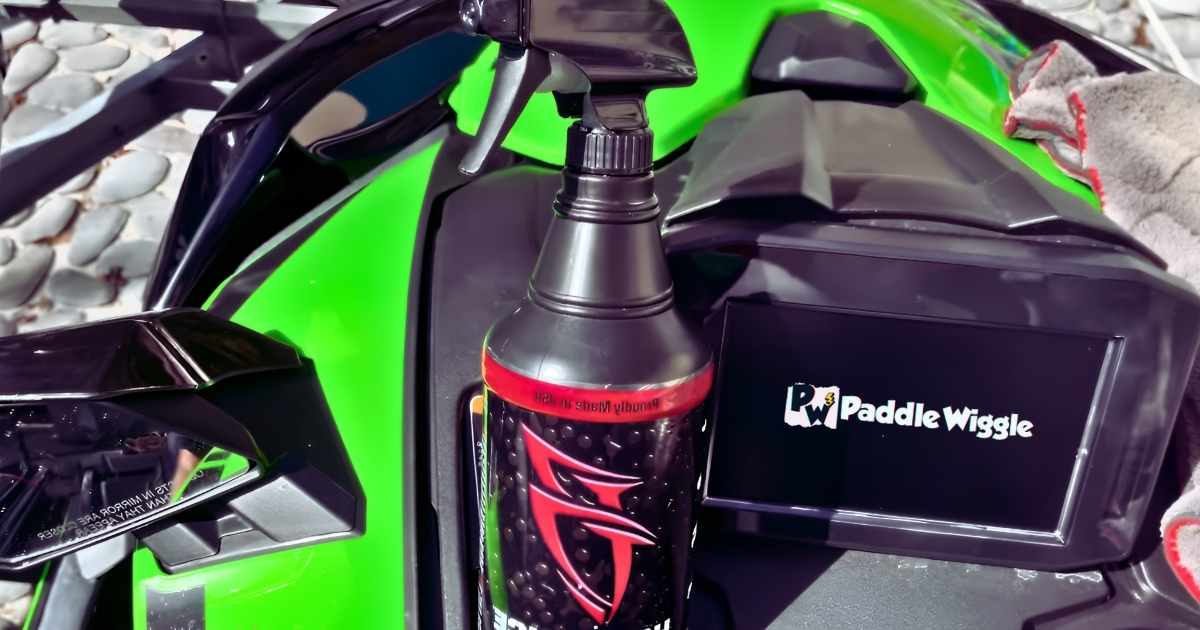

One option you can use is the “Boat Bling Hot Sauce Premium Hard Water Spot Remover.”
It works well in removing water spots, mineral deposits, and grime from your kayak without causing any damage to its surface. Using a kayak cleaning kit makes the whole maintenance process easier, and make your kayak look great and ready for your next adventure on the water!
Uv Protectant Spray
Protecting your kayak from harmful UV rays is essential to prevent fading and damage to the kayak’s material.
The “303 Marine UV Protectant” is a reliable one, as it shields your kayak from the sun’s harmful effects and keeps it looking new.
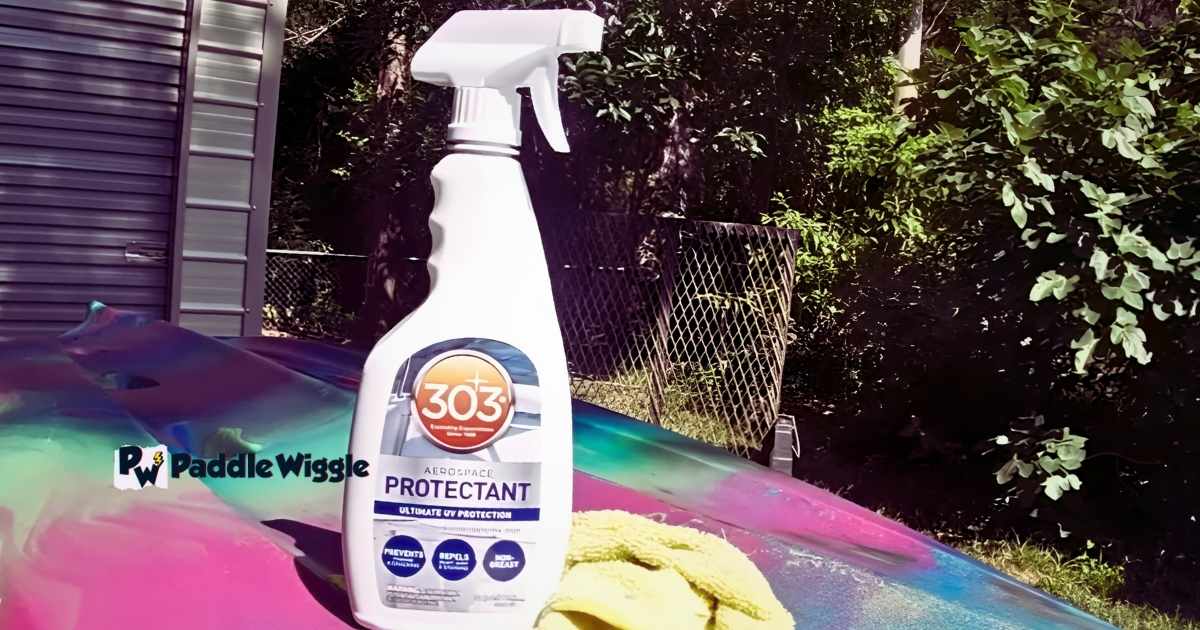

It’s easy to apply and provides long-lasting protection against fading and cracking.
Kayak Repair Kit
A kayak repair kit is a must-have for promptly addressing minor damage and leaks. Look for a kit that includes waterproof adhesives, patches, and sealant. The “Gorilla 2 Part Epoxy” available on Amazon is a versatile adhesive suitable for kayak repairs, offering a strong and durable bond on various materials.
Kayak Lubricant
A kayak lubricant is a special product that helps make the moving parts of your kayak work smoothly. So it’s important to use lubricant on parts like rudders, foot pedals, and hatches to ensure they move easily.
One popular option you can find on the market is the “Boeshield T-9 Waterproof Lubrication.”
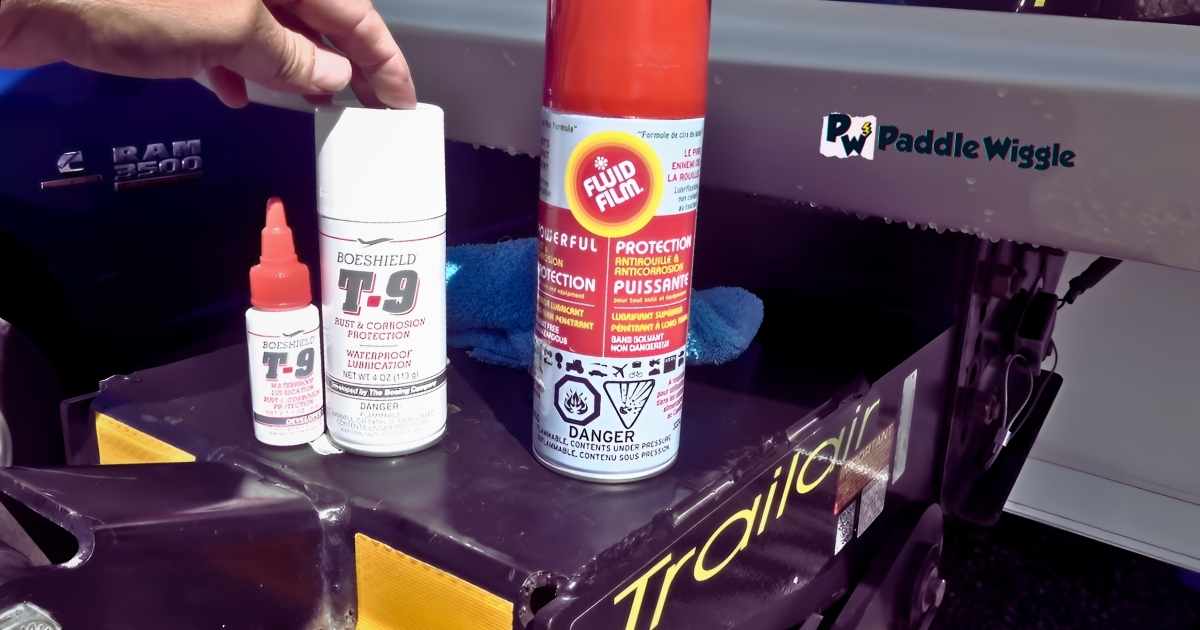

It’s a good choice because it provides long-lasting lubrication and protects against rust for different parts of your kayak.
Kayak Storage Solution
Storing your kayak properly when not in use is crucial for its longevity. Invest in a kayak storage solution like the “RAD Sportz Kayak Wall Hangers”, which safely stores your kayak off the ground, protecting it from damage and saving valuable floor space.
Understanding The Maintenance Differences For Plastic And Composite Kayaks
When it comes to kayaks, they come in different materials, with plastic and composite being the most common. Each material has its unique properties. And as a kayak owner, it’s essential to understand the maintenance differences between plastic and composite kayaks.
Maintenance For Plastic Kayaks: Durable And Low-Maintenance
Plastic kayaks, often made from polyethylene, are known for their durability. They can withstand rough handling and are less prone to damage compared to composite boats. While they require less frequent maintenance, it’s still important to follow some guidelines:
- Cleaning: To keep your plastic kayak in good condition, rinse it with fresh water after each use. This helps remove any saltwater or debris that may have accumulated during your paddling adventures.
- UV Protection: Over time, prolonged exposure to sunlight can cause the plastic material of your kayak to degrade. Applying a UV protectant occasionally can help prevent this damage and extend the life of your boat.
- Storage: When storing your plastic kayak, avoid placing heavy objects on top of it, as this could deform its shape. Ideally, store it in a cool, dry place away from direct sunlight.
Maintenance For Composite Kayaks
Composite kayaks are constructed using materials like fiberglass or carbon fiber, which offer superior performance but require more delicate care due to their construction materials’ nature:
- Regular Inspections: Unlike plastic kayaks that are more forgivingComposite boats need regular inspections for any signs of damage or stress points on the hull or deck.
- Cleaning Techniques: Follow manufacturer guidelines specific to composite kayaks regarding cleaning products and techniques. Using abrasive cleaners or brushes could damage the delicate surface of these boats.
- Waxing: Composite kayaks benefit from regular waxing as it helps protect the outer layer and maintain its glossy finish. Applying a high-quality wax product every few months can enhance the boat’s longevity.
Learn More
How Often Should I Clean My Kayak?
Regular cleaning is essential to keep your kayak in good condition. After each use, rinse it with freshwater to remove salt, sand, and debris. Thorough cleaning with a gentle kayak cleaner should be done at least once a month or after paddling in muddy or polluted waters.
Can I Use Any Cleaning Products On My Kayak?
Yes, it’s best to use cleaning products meant for the material of your kayak. Avoid harsh chemicals or solvents that can damage the kayak’s surface or protective coatings. Stick to products specifically designed for kayak maintenance.
Can I Wax My Kayak?
Yes, you can wax your kayak. Waxing can provide additional protection to the kayak’s surface and make it easier to clean. Use a marine-grade wax specifically designed for kayaks or boats. Apply the wax following the manufacturer’s instructions, and avoid using abrasive materials during the waxing process to prevent scratching the kayak’s surface. Waxing is especially beneficial for composite kayaks to help maintain their glossy finish.
How Do I Repair Minor Scratches On My Kayak?
You can use a plastic welding kit or patching kit to repair minor scratches or dents for plastic kayaks. For composite kayaks, gel coat repair kits are available for small surface damages.
What Should I Do If My Kayak Has A Leak?
If you notice a leak in your kayak, it’s essential to address it promptly. For small leaks in plastic kayaks, use a patching kit. For composite kayaks, consider seeking professional help for more significant repairs.
How Can I Protect My Kayak From UV Damage?
Storing your kayak in a shaded area or using a kayak cover when not in use can protect it from the harmful effects of UV rays. Applying a UV protectant spray designed for kayaks can also help prevent fading and damage.
What’s The Best Way To Store My Kayak During The Off-Season?
Store both plastic and composite kayaks indoors in a cool and dry place. Use padded racks or suspension systems to avoid warping or damage to the hull.
Should I Lubricate Moving Parts On My Kayak?
Yes, lubricating moving parts like rudders, foot pedals, and hatches is essential for smooth operation. Use a kayak-specific lubricant to ensure proper functioning.
How Often Should I Inspect My Kayak For Damage?
Regular inspection is crucial to catch any issues early on. Check your kayak before and after each paddling trip and perform a more comprehensive checkup before each new season.
Is There Anything I Should Avoid When Maintaining My Kayak?
Avoid dragging your kayak on rough surfaces, using harsh chemicals, exposing it to extreme temperatures, and neglecting to address minor damages promptly.
Can I Perform Kayak Repairs Myself, Or Should I Seek Professional Help?
Minor repairs on plastic kayaks can often be done as DIY projects. However, for more complex repairs, especially on composite kayaks, seeking professional assistance is recommended to ensure proper and long-lasting fixes.
Final Words
In conclusion, taking good care of your kayak is essential for every kayak owner. Whether you have a plastic or composite kayak, there are specific things to keep in mind.
Plastic kayaks are more durable and easier to repair, while composite kayaks require gentler handling to avoid scratches and damage.
By using the right supplies, like cleaning kits, lubricants, and repair kits, you can keep your kayak in great shape. Also, remember to prepare your kayak for the off-season in the fall and get it ready for the paddling season in the spring.
Again, proper maintenance will not only make your kayak last longer but also make your paddling experiences safer and more enjoyable.

